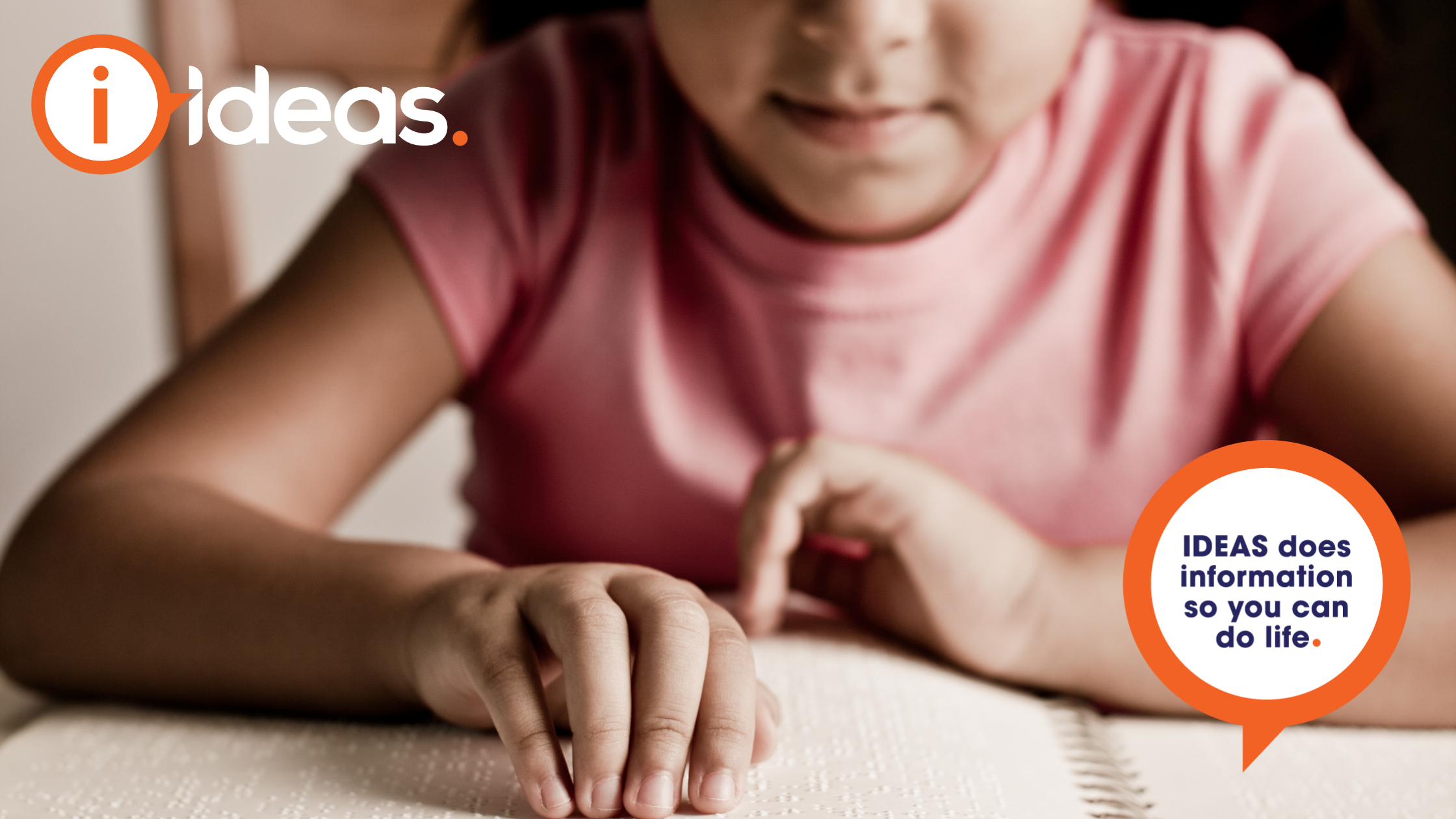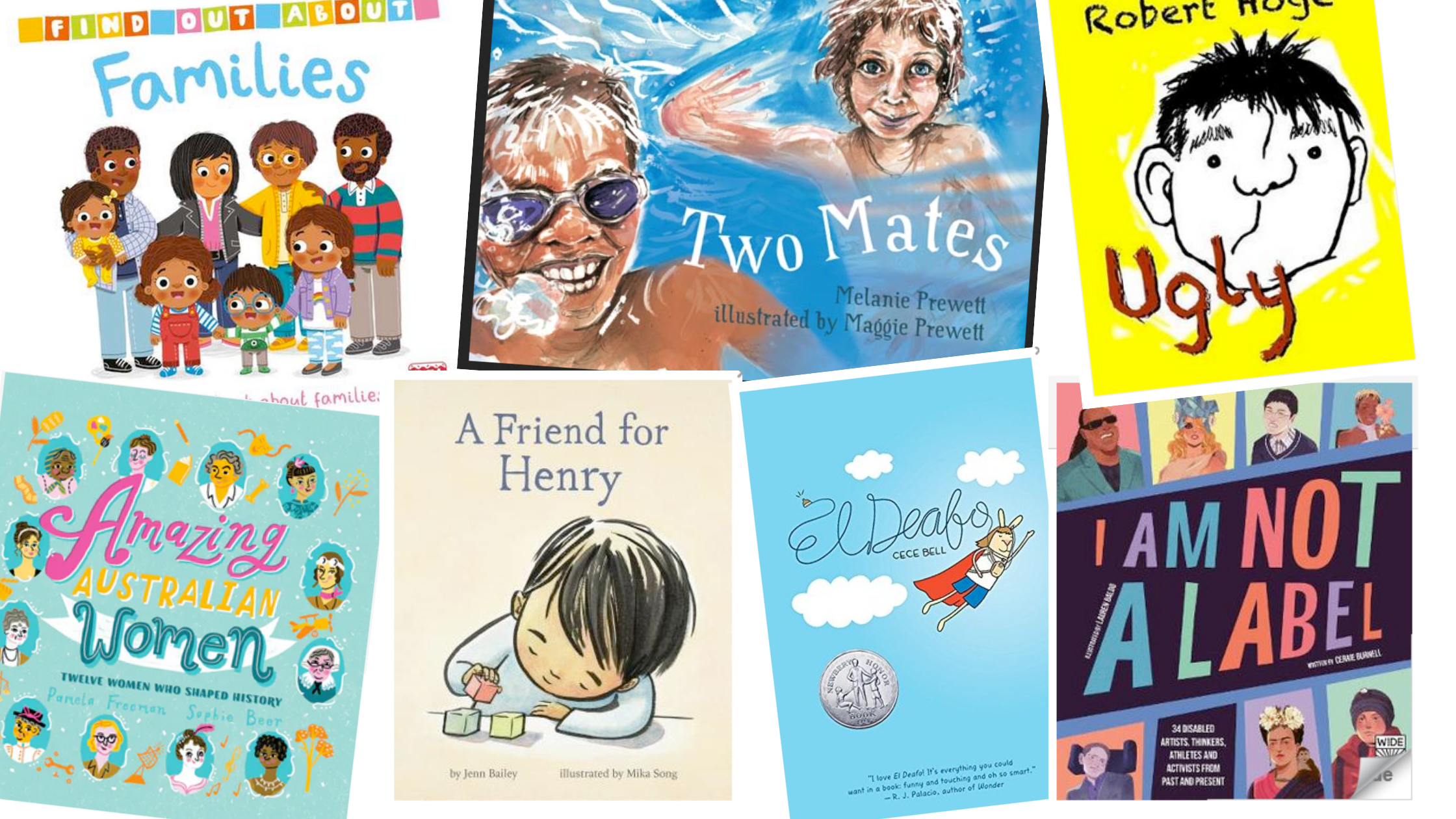It's Book Week across Australia soon, August 21 - 27th 2021, and we take a look at books that include children with a disability plus tips on making the week inclusive.
Book Week provides all kids, including those with a disability a chance to explore the world of literature, perhaps escape into a book or another world, get creative, use their imagination and make all sorts of discoveries.
Run by the Children's Book Council Australia Book Week often sees - 'classroom teachers, teacher librarians and public librarians create colourful displays, develop activities, run competitions and tell stories relating to a theme to highlight the importance of reading.'
Many schools have a Book Week parade, inviting children and willing teachers to come along dressed as a book character. Like it or loathe it (and there's families and parents in both camps!) it's very much a rite of passage and it can create lifelong memories as Mac shares in the Inky Ed blog. Book Week can also be another opportunity to foster inclusion and this article offers many practical ideas on how to achieve this.
Book Week Ideas
Reasonable adjustments can make all the difference in turning this childhood experience into a memorable one, plus teach messages of diversity and inclusion along the way. Below are some ideas that can be used across a school for students with and without disabilities and also the wider school community.
For Book Week Costume Parades
- make sure the costume parade route is clear of clutter, easy to navigate and get around
- using social stories or pictures of Book Week parades from prior years to prepare students about what to expect
- practising what will happen on the day
- a quiet place to watch the parade if the noise is too much or that cheering or noise can be contained for part of the parade
- incorporating noise-cancelling headphones into a costume if noise is an issue
- having breaks as needed and access to snacks and drinks
- a way to take part if there is too many people involved that it is overwhelming, like pre-recording students in their costumes and sharing
- if a student does not like dressing up, asking them to draw a picture of a character, bring along their favourite book or some pictures of a character
- encouraging other ways to participate, taking photos or writing an article for the school newsletter
- providing photos afterwards to family members or communication partners to help the student explain how it was
- buddying up with an older student or friend or sibling if this helps the student take part
Beyond the Parade
There are many other ways beyond the Book Week parade that offer great opportunities to embed inclusion into Book Week. We encourage you to work with your school community to see what is possible and offer some ideas as a starting place:
- inviting an author with a disability to give a speech or talk
- making sure that books that make up the curriculum for the whole school include characters with a disability
- asking children to write a review of books that include children with a disability as part of the story
- getting older students to do an audit of books in the library that are inclusive
- make recordings of children or adults with a disability reading stories
- host an Auslan storytime or share videos of these
- provide audio descriptions of illustrations when reading stories out loud.
- in visual displays having people with disabilities represented
- hands-on or interactive ways to engage with displays or events (might need to get creative this year with COVID-19)
- inviting students with a disability to select some books they would like to add to the library collection
- students begin to write their own stories about what matters to them or record it or draw it
- purchasing more books for the library that positively portray kids with a disability
- having children write to the local library with suggestions of books to include in their collection
- publishing in the school newsletter or social media channel recommendations of books about diversity
- These are all options that can be done throughout the year too.
"That kid is like me"
Representation matters, for kids with a disability as well as their peers. Being able to identify yourself in a book, seeing other children like yourself or like your family members or people in your community can help people feel included, and create a sense of belonging. Books can also help to change attitudes.
Sharing high quality inclusive literature offers an opportunity to talk with and through books that challenge ableist norms.
Books with children with a disability can take a number of forms, and having a range of these in a collection is important. Books can include:
- children with a disability not as a feature, or even mentioned, just taking their rightful place alongside other characters
- as a focus, often teaching a message of understanding, inclusion and accepting difference, in fiction or non-fiction forms
- sharing a true-life story of a person with a disability, often well-known people but not always
- a person with a disability as the key character or with a central role
Of course, children's books can also include adults, parents, workers, leaders, friends and family members that happen to have a disability too.
Here are some books the IDEAS team has on their bookshelves or wish lists!
- Amazing Australian Women: Twelve Women Who Shaped History - This includes Tilly Aston's story, a blind Australian writer and teacher, who founded the Victorian Association of Braille Writers.
- Ugly - a novel about family, hope, disability and luck. See Carly Findlay's blog featuring Australian author Robert Hoge.
- Find out About Families - Meet lots of different families in this fun lift-the-flap book. This includes families where members have a disability and some illustrations.
- A friend for Henry - a book about seeking friendship, perhaps about a boy who has Autism.
- Two Mates - The true story of the special mateship between two boys who have grown up together in Broome in Australia’s northwest. Jack is Indigenous and Raf is a non-Indigenous boy who has Spina bifida.
- El Deafo - a graphic novel memoir about growing up hearing impaired
- I Am Not A Label - 34 disabled artists, thinkers, athletes and activists from past and present
- Break the Mould - Sinead Burke - From the power of being different and discovering things you love about yourself, to using your voice to be an ally and show friendship to others, it's time to break the mould and find your place in the world.
How to choose inclusive books
- If you are wanting to have a more diverse range of books in your school library collection, local library or at home, look out for books:
- written or illustrated by people with a disability, this first-hand perspective, voice and experience is important
- are recommended by people with a disability
- that have real people with a disability in the photographs
- include everyday experiences, not just 'inspirational' and 'overcoming adversity' style narratives (there's a place for these of course, but it shouldn't be the only type in your collection)
- that cover a variety of disability types, visible and invisible
- may also include children with a disability from culturally diverse backgrounds, different genders, races, religions etc
4 questions to consider when assessing if a book is suitable for your collection
- Does the author/illustrator present the character with a disability label as multidimensional?
- Whose story is this and who gets to tell it?
- As a reader, how have you been positioned to think about feel about the character with a disability label in this book?
- What opportunities does the character with a disability label have in the book to engage in authentic relationships?
Books can open up conversations, help change attitudes, create understanding and allow people to explore topics in different ways
Be sure to allow time for questions and follow up when reading with children to help make the most from these opportunities.
More Information
To discover even more inclusive books see
Book List: Experiences of disability Disability in Kid Lit



